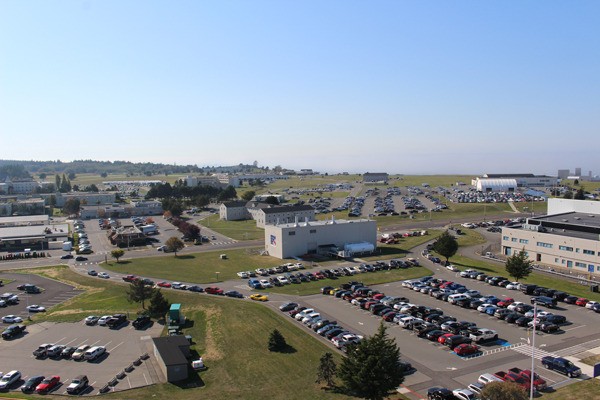Naval Air Station Whidbey Island scored two big wins in next year’s proposed federal military budget.
The base is slated to receive $45 million for a EA-18G Growler maintenance hangar and $30 million for a Triton mission control facility in the president’s Department of Defense budget.
Whether NAS Whidbey gets all or part of the money is still a big “if,” said base spokesman Mike Welding.
The Navy is considering placing a MQ-4C Triton control facility on Whidbey. The Triton is the Navy’s high-altitude unmanned aircraft system.
The Triton would fly out of Naval Air Station Point Mugu in California — none would fly at Whidbey. The Triton would work with the P-8 A Poseidon performing maritime patrol and anti-submarine warfare missions.
“This is proposal,” Welding said.
“We won’t know until the budget is approved.”
Congress must approve the budget, and it’s not clear how many Growlers are coming to NAS Whidbey until the Navy completes an Environmental Impact Statement.
The Department of Defense identified a need for more Growlers to enhance the country’s electronic attack capability. Congress will ultimately decide how many to buy. The environmental assessment is expected to be complete by the spring of 2017.
The Navy’s Office of Information at the Pentagon didn’t know when there would be a clear decision on whether the base receives the funds.
“I cannot speculate as to when we can expect our budget to be approved by Congress or the likelihood of these particular projects being approved,” said spokeswoman Lt. Amber Lynn Daniel.
The Navy also didn’t provide more details on the scope of the proposed projects, although both would be sited at Ault Field, said Leslie Yuenger, a spokeswoman with Naval Facilities Engineering Command Northwest.
Also in the budget are line items for Naval Base Kitsap-Bangor. It may receive $6 million for a nuclear repair facility, $21 million for a submarine refit maintenance support building and $18 million for service pier electrical upgrades.
The $582.7 billion proposed budget, sent to Congress Tuesday, reflects recent strategic threats and changes in Asia, the Middle East and Europe, according to a Department of Defense statement.
Russian aggression, terrorism by the Islamic State of Iraq and Levant and others, and China’s island building and claims of sovereignty in international waters all necessitate changes in the U.S.’s strategic outlook, according to the statement.
“This budget marks a major inflection point for the Department of Defense,” Secretary of Defense Ashton Carter said in a prepared statement.
“Even as we fight today’s fights, we must also be prepared for the fights that might come in 10, 20 or 30 years.”



